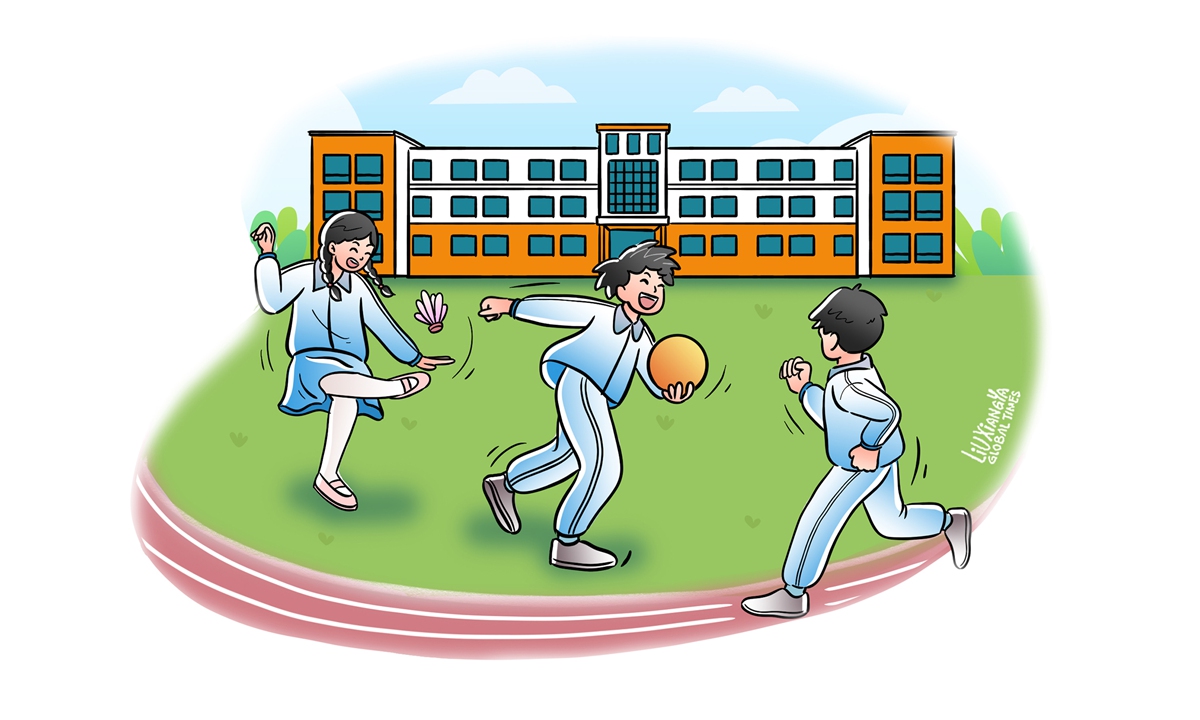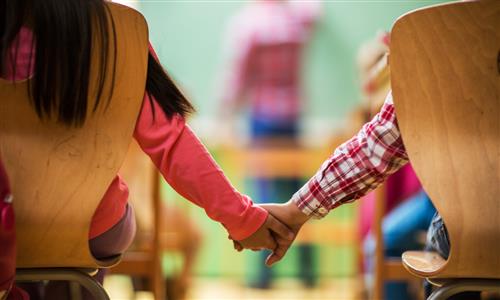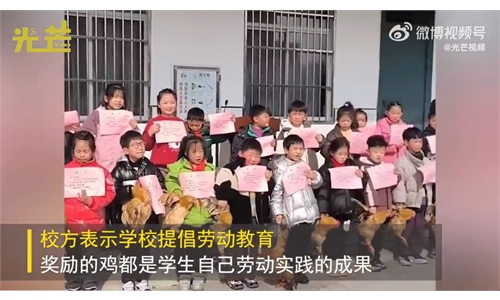ARTS / CULTURE & LEISURE
Playtime essential despite potential safety concerns

Photo: Liu Xiangya/GT
At the ongoing two sessions, Chen Weizhi, a member of the National Committee of the Chinese People's Political Consultative Conference (CPPCC), proposed to give the 10-minute break between classes back to students, which has sparked heated discussions online.
Previously, media had reported that out of safety concerns, students in many primary and middle schools have been asked to stay in their classrooms unless going to the restroom.
One parent of a grade-5 kid from East China's Shandong Province told Xinmin Evening News on Tuesday that since her son has been confined to his seat during breaks, he has gotten fat due to a lack of exercise at school.
"Some students were punished for playing around in the classroom during breaks. Since then, they no longer dare to run around after class," one parent said.
Chen believes that such rules would affect the physical health of students, which is not conducive to cultivating students' interest in sports, and also affect their learning efficiency and mood, increasing the burden of students' schoolwork and anxiety.
So Chen has introduced suggestions advocating giving the 10-minute break back to students, including strengthening supervision, avoiding unreasonable incidents of "asking students to stay in the classroom," distributing classroom hours in various disciplines scientifically, and improving the identification and compensation mechanisms when students have accidents.
The break between classes functions as a way to allow children to be themselves, exercise their bodies, and engage in social interaction. It is also an indispensable bright spot in students' busy study sessions.
Taking the break time away from students not only goes against the purpose of education but also deprives them of valuable experiences and opportunities for self-development during their growth.
According to data from China's National Health Commission, the overall myopia rate among children and adolescents in China was 53.6 percent in 2022.
Participating in outdoor physical activities is an important measure for preventing and controlling myopia, while canceling the short breaks will only lead to a reduction in outdoor activity time for primary and secondary school students, increasing the probability of myopia.
Without adequate breaks, students will see increased stress, fatigue, and decreased concentration levels. This continuous academic pressure may also hinder their ability to retain information effectively and engage in critical thinking.
Rather than sacrificing children's natural growth in exchange for physical "safety," educators need to be adept at resolving risks. To tackle the challenge of the 10-minute break between classes, schools could adopt concrete measures to enhance safety management, instead of restricting activity spaces to avoid potential issues.
The well-being of students is the focus of education. The 10-minute break between classes is an integral part of the learning process.
The regulations on the protection of minors in schools, which officially took effect on September 1, 2021, stipulate that schools are not allowed to implement measures that infringe upon students' personal freedom for activities such as games, and activities outside the classroom during breaks and other non-teaching times. Schools are required to improve their management systems to ensure that students have access to sports facilities and engage in physical exercise during breaks and after school.
Regular, short breaks can help students focus, increase their productivity, and reduce their stress. Taking part in purposeful activities during the break allows students to take a rest from their academic tasks, engage in physical movement or mental relaxation, and recharge their minds for improved learning.
It's encouraging to see that following the widespread public discussion about class breaks, many schools in Shanghai and the cities of Shenzhen and Guangzhou in South China's Guangdong Province have launched activities for students to relax during the 10-minute break. Some schools have even extended breaks to 20 minutes.



